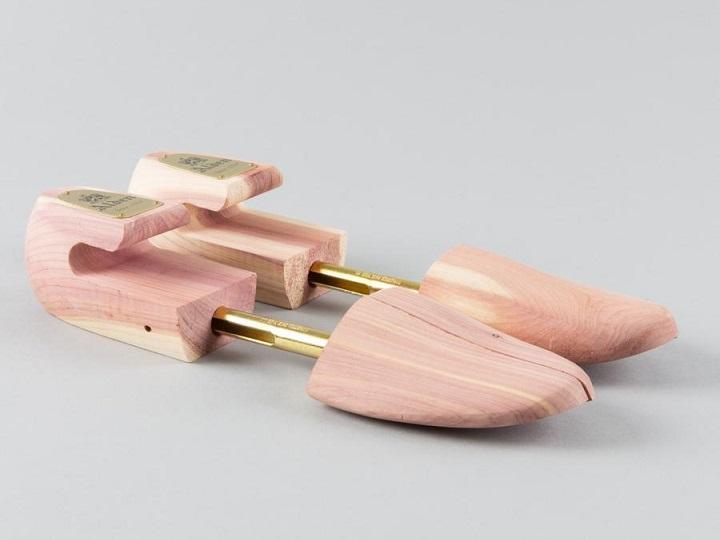If you want your high-quality shoes to last longer, you need to use shoe trees to maintain their shape, avoid creases or wrinkles, and absorb moisture.
Cedar shoe trees are some of the most popular shoe trees on the market, but trees made from other types of wood work as well. But are they a good investment? Let’s take a look at some frequently asked questions about cedar shoe trees, their benefits, and how and when you should use them.
How long do cedar shoe trees last?
Cedar shoe trees last forever, but you should reinvigorate the cedar yearly by sanding the tree with grit sandpaper in order to refresh the scent, open the grain, and keep moths from attacking your shoes. Using cedar oil on the blocks helps with the scent as well.
What are the benefits of using cedar shoe trees?
In addition to absorbing the moisture from your shoes and protecting their shape, cedar also has anti-bacterial properties and a natural, aromatic scent. It acts as a deterrent for bugs and moths as well.
If you want your shoes to last longer, smell great and not get attacked by critters, a cedar shoe tree is a necessary purchase.
Do I need a pair of trees for every pair of shoes?
Ideally, yes. Since you can buy cedar shoe trees quite cheaply, there is no reason not to have a pair of trees for every pair of high-quality shoes.
However, if you want to rotate a pair of shoe trees among multiple pair of shoes, keep in mind that shoes should stay in the trees for a full day (24 hours) to rest after wearing them.
How often should I use shoe trees?
You should use shoe trees after every wearing if possible. After taking your shoes off, let them air for 20 minutes, then insert the shoe trees and let them rest for at least 24 hours before the next wearing.
Do shoes dry out better in a cedar shoe tree than in open air?
Yes. The average indoor relative humidity is about 40-50%, which means that water vapor is quite abundant in the air and your shoes dry out much better by using a cedar shoe tree.
The cedar will absorb the moisture from the shoe and from the surrounding air much faster than the rate at which the humid air from inside your shoes normally gets replaced by the air outside your shoe.
Are plastic shoe trees a good replacement for cedar shoe trees?
No. Plastic does not have the same properties as cedar or any type of wood for that matter. Plastic shoe trees are not able to absorb moisture so they don’t prevent any mold or mildew, don’t have any anti-bacterial benefit and don’t prevent smelly shoes.
They do keep the shape of the shoes and weigh very little, so they are ideal for travel to prevent your shoes from getting squashed in a suitcase. But for long-term care, you need to use cedar wood trees.

